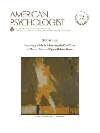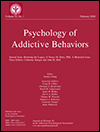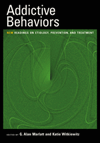Helping Vulnerable Populations a Comprehensive Review of the Treatment Outcome
Problematic substance use among conflict-affected populations in depression-and middle-income countries

The United Nation's Sustainable Evolution Goal 3.5 calls for strengthening the prevention and treatment of substance abuse. Globally, substance use disorders (SUDs) are associated with the highest mortality amongst mental, neurological, and substance use (MNS) disorders (World Health Organization [WHO], 2014). Rates of SUDs and their associated impact on health are rising in depression- and eye-income countries (LMICs), making their impact on vulnerable populations an important global mental health business concern. This has particular significance for conflict-afflicted populations due to the interactions between trauma and substance apply, too as the additional hardships experienced in disharmonize and mail service-conflict settings relevant to mental health outcomes (e.g., loss of social support, fragmented infrastructure, limited admission to health care, etc.).
How are trauma and substance use related?
A large torso of research in higher income nations has demonstrated a loftier comorbidity between problematic substance use and trauma exposure and related posttraumatic stress symptoms beyond a diverse range of populations, settings, and substances. Loftier rates of comorbidity between Posttraumatic Stress Disorder (PTSD) and SUDs take been reported among combat veterans, sexual assault survivors, and individuals that accept been exposed to natural disasters (Haller & Chassin, 2014).
Several pathways have been suggested in the literature to explicate the relationship between trauma exposure and substance use.
- The self-medication hypothesis: individuals attempt to amend their PTSD symptoms with substance utilise.
- The high-take chances hypothesis: substance use increases the risk for exposure to a traumatic event.
- The susceptibility hypothesis: substance use may increase run a risk for developing PTSD amongst individuals who accept been exposed to a potentially traumatic issue.
- The shared vulnerability hypothesis: shared risk factors business relationship for both PTSD and SUDs.
Of these hypotheses, the self-medication hypothesis has demonstrated the virtually empirical support as a distinct pathway, but existing literature also provides support for an integrated model in which several pathways betwixt trauma exposure and substance utilise interact (e.grand., substance use increases risk for trauma exposure and trauma-related psychiatric difficulties increment the take a chance of SUDs). With regard to conflict-affected civilian populations, an integrated model would account for war-related stressors other than potentially traumatic events (PTEs) that may maintain problematic substance use patterns.
Though relatively less developed, research with trauma-exposed individuals in LMICs appears to demonstrate a similarly high comorbidity between problematic substance use, trauma exposure, and trauma-related mental health difficulties. Alcohol use is growing in LMICs due to globalization, rapid urbanization, increased availability of alcohol, limited regulation of sales, and weak policy infrastructure. For example, college rates of hazardous alcohol employ have been found to be positively associated with trauma exposure among conflict-affected populations in Uganda, Georgia, and Columbia (Londono et al., 2012; Roberts et al., 2011; Roberts et al., 2014). Khat (a psychostimulant that is cultivated and commonly used in Eastern Africa and the Arabian Peninsula) use has been shown to be college amidst individuals who have experienced traumatic or stressful events. Furthermore, khat users report experiencing more posttraumatic stress symptoms following trauma exposure when compared to non-khat users (Widmann et al., 2014).
Though the pathways between trauma and substance utilize that have been studied in loftier income countries are likely relevant to LMICs as well, they are not sufficient in addressing the complexities of state of war-related stressors. Hypothesized mediators of the human relationship between conflict and substance misuse among disharmonize-afflicted populations in LMICs include mental health (due east.yard., trauma, mental illness, stress), boredom related to lack of economic opportunity, changes in social norms or structure, changes in drug availability, and changes in legal structure or law enforcement (Greene et al., 2018).
Why look at the relationship between trauma exposure and substance utilise?
It has been suggested that the relationship between SUDs and PTSD is more than enduring than for other mood and anxiety disorders and that PTSD symptoms may become worse with initial abstinence (Najavits et al., 2010). Comorbid PTSD and SUD is associated with poorer outcomes than either disorder alone, with a more complex clinical course, increased chronic physical health problems (e.g., cardiovascular and neurological difficulties), poorer functional condition, college rates of suicide attempts, more legal bug, increased risk of violence, poorer social functioning, and poorer overall wellbeing (McCauley et al., 2012). Additionally, individuals with comorbid PTSD-SUD report more psychiatric symptoms and interpersonal distress than individuals with either disorder alone and demonstrate poorer treatment adherence and worse treatment outcomes (Norman et al., 2007).
Within conflict settings, substance misuse is associated with several negative health and social outcomes that have impacts across the private, including: (1) serious morbidity, (2) co-occurring mental health bug and suicide, (3) domestic violence, (four) child neglect, (5) reduced food security, and (6) increased poverty (United Nations Loftier Commissioner for Refugees and World Health Organization, 2008).
How does the global mental health community begin to accost this problem?
The 2022 World Drug Report produced by the United Nations Office on Drugs and Criminal offense (UNODC) reports that drug and alcohol health services go on to fall short, with only i in six individuals suffering from a drug utilise disorder receiving treatment. Despite substance misuse interventions falling within the mandates of several aid agencies, steps to monitor, prevent and treat SUDs among conflict-affected populations in LMICs accept been limited. The post-obit considerations may serve equally initial steps to guide the global mental wellness community in addressing this gap:
- Though existing evidence-based interventions may be applicable in these settings, further research to inform accommodation is needed given the heterogeneity of populations that fall under the umbrella term of LMICs.
- Treatment packages for use with conflict-affected populations in LMICs must consider issues related to sustainability, given a lack of specialized personnel and resources, as well as cultural factors that might affect the efficacy of treatment.
- Additional focus is also needed for vulnerable populations that face unique challenges relevant to substance misuse and access to handling (e.one thousand., street children, women, older persons, and individuals involved with the criminal justice arrangement).
Resources
Greene, M. C., Kane, J. C., Khoshnood, Grand., Ventevogel, P., & Tol, W. A. (2018). Challenges and opportunities for implementation of substance misuse interventions in conflict-affected populations.Harm reduction journal,xv(1), i-10.
Haller, Thousand., & Chassin, L. (2014). Hazard pathways amongst traumatic stress, posttraumatic stress disorder symptoms, and booze and drug problems: A test of iv hypotheses.Psychology of Addictive Behaviors,28(3), 841.
Londoño, A., Romero, P., & Casas, Yard. (2012). The association between armed conflict, violence and mental health: a cross sectional study comparing two populations in Cundinamarca department, Colombia.Conflict and health,six(ane), 12.
McCauley, J. 50., Killeen, T., Gros, D. F., Brady, K. T., & Dorsum, South. E. (2012). Posttraumatic stress disorder and co‐occurring substance use disorders: Advances in assessment and treatment.Clinical Psychology: Science and Exercise,xix(3), 283-304.
Najavits, 50. M., & Hien, D. (2013). Helping vulnerable populations: A comprehensive review of the handling event literature on substance employ disorder and PTSD.Journal of clinical psychology,69(5), 433-479.
Roberts, B., Ocaka, Thousand. F., Browne, J., Oyok, T., & Sondorp, Due east. (2011). Alcohol disorder among forcibly displaced persons in northern Republic of uganda.Addictive behaviors,36(8), 870-873.
Roberts, B., Murphy, A., Chikovani, I., Makhashvili, North., Patel, V., & McKee, M. (2014). Individual and community level take chances-factors for alcohol apply disorder among conflict-afflicted persons in Georgia.PloS ane,9(five), e98299.
Un loftier Commisioner for Refugees (2016). Culture, context and mental health of Somali refugees. Geneva, Un Loftier Comissioner for Refugees. Retrived from: https://data2.unhcr.org/en/documents/download/52624
Widmann, M., Warsame, A. H., Mikulica, J., von Beust, J., Isse, M. M., Ndetei, D., ... & Odenwald, 1000. M. (2014). Khat utilise, PTSD and psychotic symptoms among Somali refugees in Nairobi–a pilot study.Frontiers in public wellness,2, 71.
World Wellness Organization. Management of Substance Abuse Unit. (2014). Global status study on alcohol and health, 2014. Globe Health Organization.
World Wellness Arrangement (2019). Globe drug report. Retrived from: https://wdr.unodc.org/wdr2019/alphabetize.html
Recommended Reading




Members may qualify for lower pricing
Contact International Affairs
hornbergeraffen1947.blogspot.com
Source: https://www.apa.org/international/united-nations/un-matters/substance-use-conflict-countries
0 Response to "Helping Vulnerable Populations a Comprehensive Review of the Treatment Outcome"
Postar um comentário